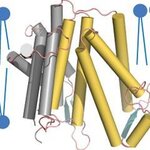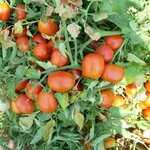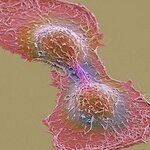Genetics & Molecular Biology

Cholesterol has gotten a bad reputation, thanks to mainstream media's penchant for alternating miracle vegetables with scare journalism, which prompts shady diet fad book authors to promote whatever is getting attention this year.
Outside health fads, cholesterol is an essential component of human cells, manufactured by the cells themselves, that serve to stiffen the cell's membrane, helping to shape the cell and protect it. By mapping the structure of a key enzyme involved in cholesterol production, researchers have gained new insight into this complex molecular process.
An enzyme…

Researchers have uncovered a molecular process in the brain known to control eating that transforms white fat into brown fat, and that impacts how much energy we burn and how much weight we can lose.
With food science making food cheaper to grow in a variety of regions, obesity has become a global epidemic. Excess fatty tissue is a major risk factor for type 2 diabetes, cardiovascular disease, hypertension, neurological disorders, and cancer.
People obviously become overweight when they eat more calories than they burn. Excess calories are stored in the adipose tissues, which are…
A recent genome-wide meta-analysis has identified a biological commonality among 120,000 regular coffee drinkers - 6 new genetic variants related to caffeine metabolism, lipid and glucose metabolism, and its psychoactive effects, found among about 2.5 million variants in the genome.
The researchers believe it may explain why different people have different reactions to coffee - some papers have even found an increased risk of death and they explain 1.3 percent of our coffee-drinking behavior. If that doesn't sound like a lot, it is the same genetic basis for smoking.
Those different reactions…

Tomatoes contain antioxidants such as vitamin C, lycopene, β-carotene, and phenolics. Antioxidants are substances capable of delaying or inhibiting oxidation processes caused by free radicals and are of interest to both consumers and plant biologists. Consumers, for their health-related contributions, and plant breeders for their ability to provide plants with natural resistance to biotic and abiotic stresses.
Traditional genetic modification focused on traits such as fruit weight, color, shape, and disease resistance, but scientists are now looking at ways to develop tomato cultivars that…

1.033 billion http://worldpopulationreview.com/continents/africa-population/ 7.125 billion http://www.prb.org/Publications/Datasheets/2014/2014-world-population-da...
14 percent of world population but 10 percent people in studies.
10,000 diseases. Geoffrey Siwo Dartmouth computational biologist lost three sisters to disease in Kenya.
http://www.fastcoexist.com/3036620/its-a-huge-dangerous-mistake-that-afr...
http://www.ozy.com/#!/rising-stars-and-provocateurs/geoffrey-siwo-crowd…
United Genomes Project, Africa's first crowdsourced, open-source genetic database. Siwo and his team…
Credit: Shutterstock
One thing certain about nature - it sure isn't efficient. Just take a look at the human male reproductive system and you get the idea that if it was designed, it was designed by fish, and on a dare. It is a problem waiting to happen, but evolution is about the survival of the fitter, not the fittest - and then we add in some random walks and mutations.
None of those could be termed the most efficient. But synthetic biology can fix that. Synthetic biologists design and build workhorse organisms that can make things more efficiently than nature itself. Obviously the…

A microRNA molecule has been tagged as a surprisingly crucial player in managing cell survival and growth. The findings underscore the emerging recognition that non-coding RNAs – small molecules that are not translated into working proteins – help regulate basic cellular processes and may be key to developing new drugs and therapies.
Principal investigator Albert R. La Spada, MD, PhD, professor of cellular and molecular medicine at UC San Diego, and colleagues found that a microRNA known as let-7 controls autophagy through the amino acid sensing pathway, which has emerged as the most potent…

By Jon Entine, Genetic Literacy Project
Visit almost any anti-GMO website and you will find alarming headlines about the alleged dangers of GMO foods. They kill pigs, cows and sheep on farms and in lab studies! Humans are next!
“Monsanto’s GMO Feed Creates Horrific Physical Ailments in Animals,” screams a typical article, in AlterNet, a popular anti-GMO site. It touts “new research” but as is typical of such articles and such sites, it neither quotes a study nor links to any independent research.
Although there have been more than 2,000 studies documenting that biotechnology does…

Our fat contains a variety of cells with the potential to become bone, cartilage, or more fat if properly prompted. This makes adipose tissue a key potential resource for regenerative therapies such as bone healing if doctors can get enough of those cells and compel them to produce bone.
In a new study, scientists at Brown University demonstrate a new method for extracting a wide variety of potential bone-producing cells from human fat. They developed a fluorescent tag that could find and identify cells expressing a gene called ALPL. Expression of the gene is an indicator of bone-making…

Our immune system must distinguish between self and foreign and in order to fight infections without damaging the body's own cells at the same time. The immune system is loyal to cells in the body, but how this works is not fully understood.
A new study has discovered that the immune system uses a molecular biological clock to target intolerant T cells during their maturation process.
A functioning immune system is tolerant towards the body's own tissue. During maturation, immune cells are targeted and eliminated if they have a strong reaction to the body's own substances. This process…